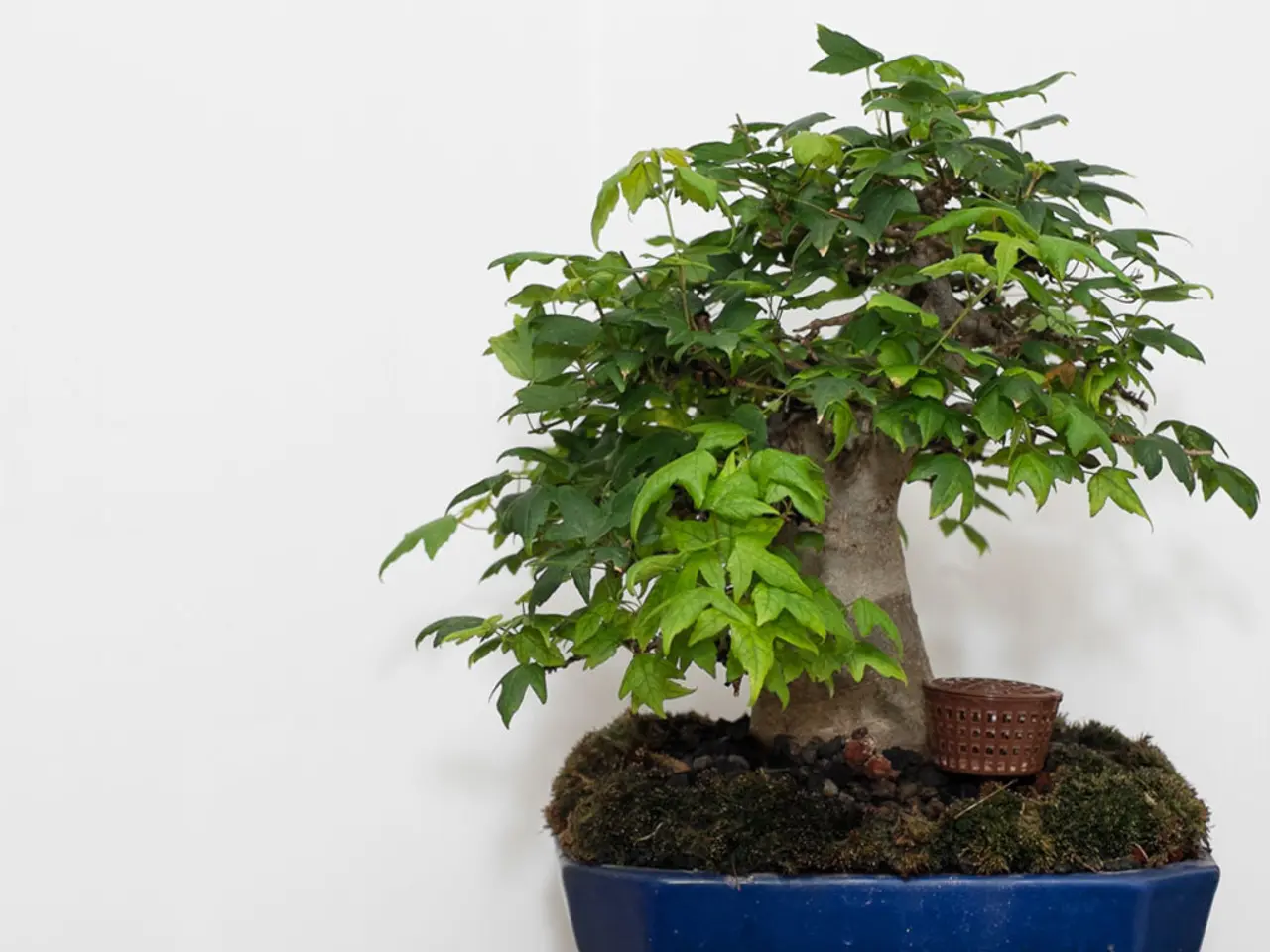Reason for Bonsai's use of shallow pots
In the captivating world of bonsai, shallow pots play a pivotal role in maintaining the art form's tradition and ensuring successful cultivation. With aesthetic and horticultural benefits, these containers contribute significantly to the miniature trees' visual appeal and overall health.
At the heart of bonsai design lies the shallow pot, which helps create the illusion of a mature, full-sized tree in miniature. By restricting the root zone and reducing soil volume, the pot emphasizes the tree's trunk, branches, and foliage, making the composition appear more balanced and natural in scale. A deep pot would disrupt this illusion, making the tree appear disproportionately small compared to its container.
From a horticultural perspective, shallow pots offer several advantages. They naturally restrict root growth, which is essential for maintaining the tree’s miniature size. This restriction encourages the development of a compact, fibrous root system rather than long, stretching roots, ensuring the tree's health and stability in a confined space.
Shallow pots also improve drainage, reducing the risk of overwatering and root rot—common issues in bonsai cultivation. Excess water can drain away more efficiently, protecting the roots from staying soggy. This improved drainage simplifies maintenance, making it easier to manage watering, fertilization, and repotting. It also enhances air circulation around the roots, lowering the risk of fungal diseases and promoting a healthier root environment.
When selecting a pot for a bonsai tree, it's crucial to consider its size. The pot should be just large enough to allow some root development but shallow enough to maintain the desired aesthetic and horticultural benefits. A fast-draining, airy bonsai soil mix complements the shallow pot and further protects against overwatering.
Not all bonsai species thrive in shallow pots, so it's essential to select trees with naturally small leaves and robust, adaptable root systems for best results. Clay or ceramic pots, known for their excellent breathability and moisture retention, are popular choices for bonsai pots. Plastic pots provide good drainage and insulation properties, making them suitable for both indoor and outdoor use.
Wooden containers create a naturalistic look for bonsai displays and are traditionally used in bonsai art. Porcelain or glass containers offer a stunning contrast against the rugged beauty of bonsai trees but are fairly fragile. The number of drainage holes in a bonsai pot depends on its size; smaller pots may have one or two, while larger ones may have more.
In conclusion, shallow pots are integral to bonsai cultivation for both their visual impact and their role in promoting healthy, manageable growth. They help maintain the tree’s miniature form, improve root health, and simplify care—core principles in the art of bonsai. The Bonsai World platform aims to equip users with everything needed to grow and maintain a beautiful bonsai tree.
A thoughtful choice of shallow pot is crucial for maintaining a balanced and natural scale in bonsai tree species, as it helps restrict root growth and emphasize the tree's trunk, branches, and foliage. In terms of lifestyle and gardening, these pots offer improved drainage, essential for preventing overwatering and ensuring a healthy home-and-garden environment for bonsai trees.




